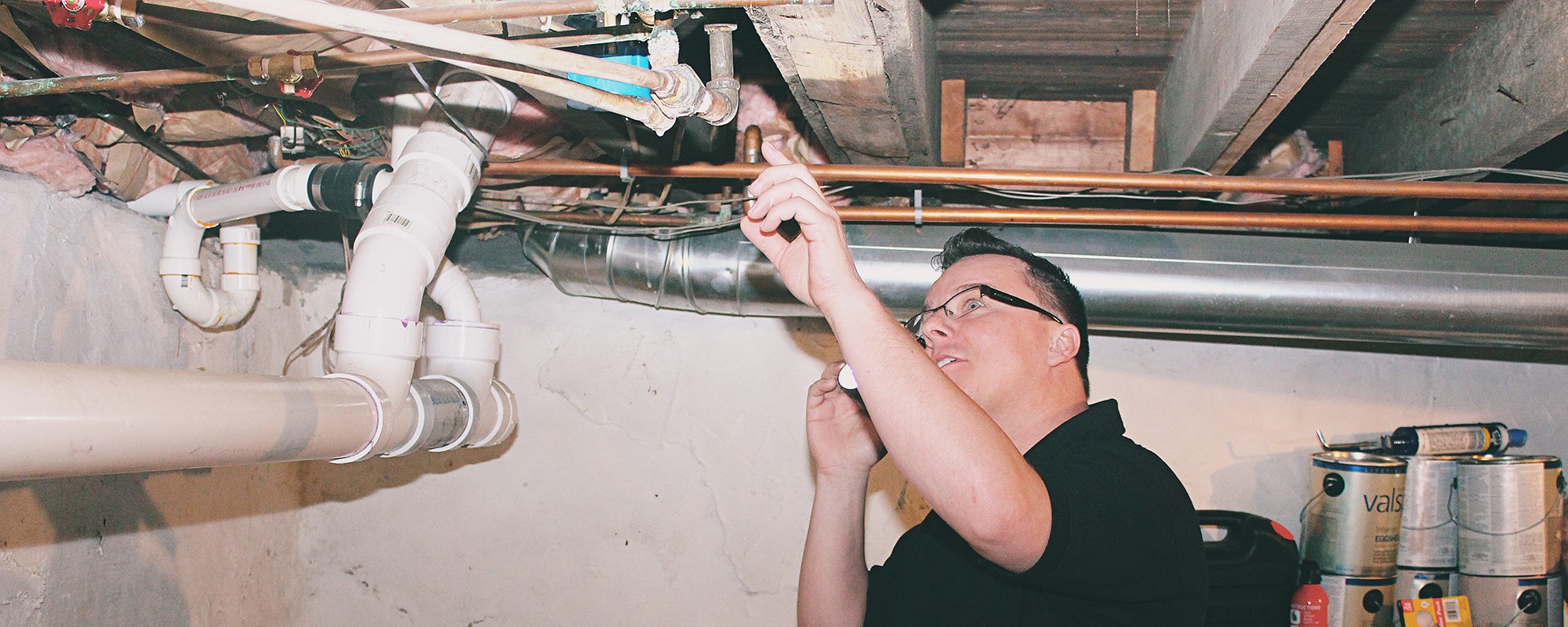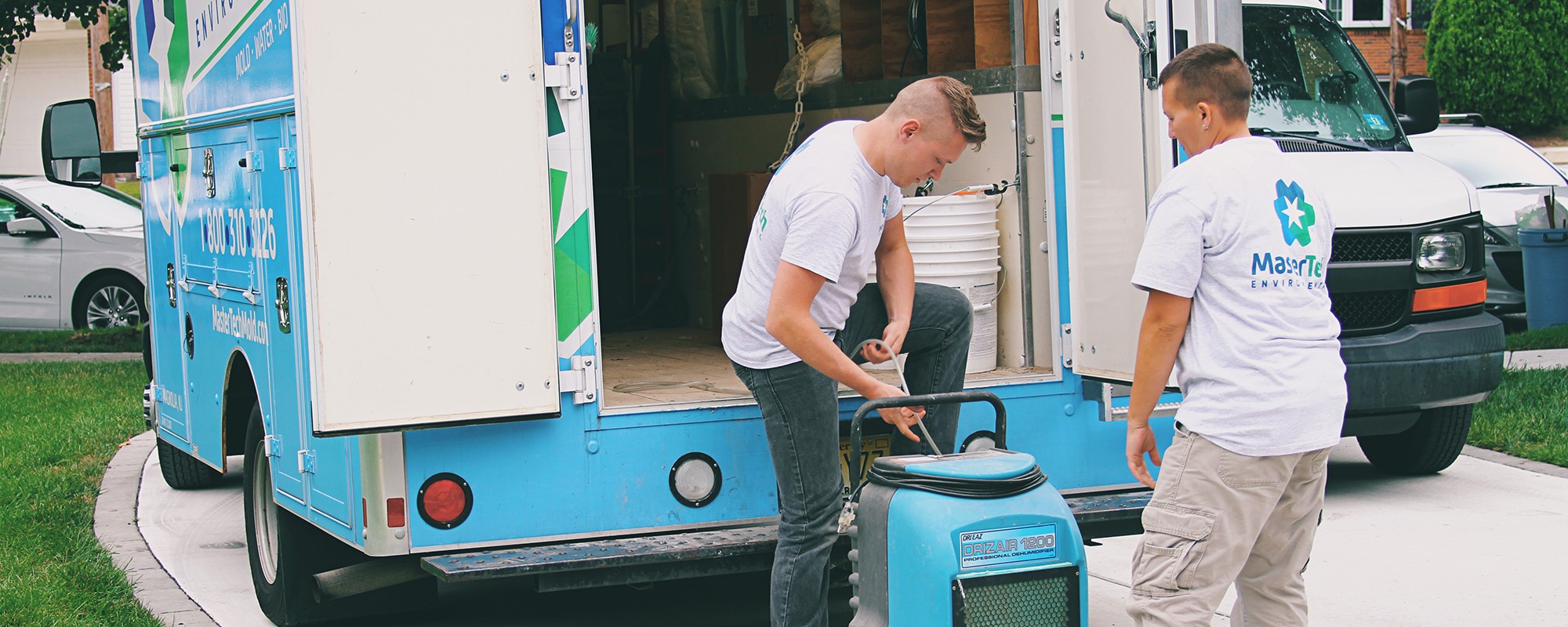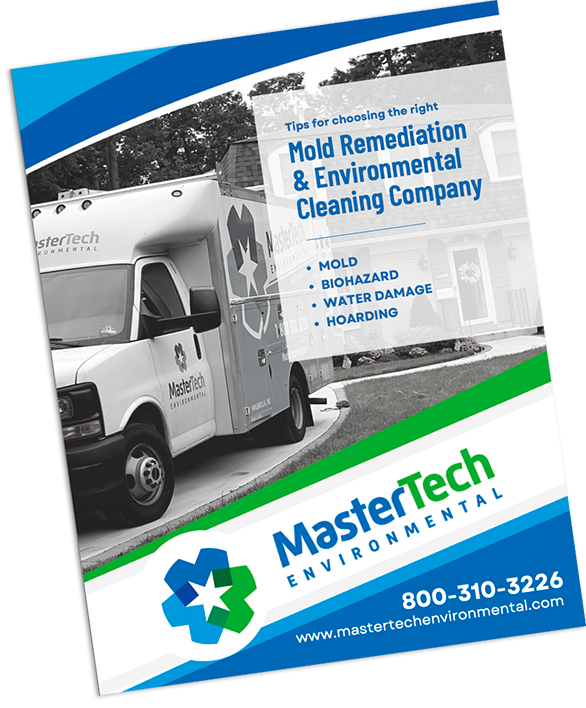Mold research is relatively new and the science community is constantly discovering and understanding more about its potential health and safety implications. As a result we have a habit of falling trap to the sensationalized reputation of mold. Be careful about believing the scare tactics and mold myths. Do your research and call a trustworthy professional who can help you differentiate between mold myths and mold facts.
Common Mold Myths Debunked
Bleach kills mold
Truth: All bleach does is discolor the mold growth.
Perhaps one of the most damaging mold myths is bleach. By applying bleach to mold, you are, quite literally, bleaching it. The active mold roots are still there. The active ingredient in bleach, sodium hypochlorite, is merely a stain remover that cannot permeate beyond the surface of building materials to destroy the mold roots. The mold appears to be gone after a bleach application, but as long as the roots are intact, the mold will easily grow back. In minor cases, where the mold development is on a hard, nonporous surface, a bleach treatment may be effective because it is not possible for the mold to root itself in such materials.
Furthermore, bleach is made up of primarily water. The water in the bleach absorbs right into building materials while the sodium hypochlorite evaporates from the surface. By beaching mold, you are actually providing the mold with more water to feed on and thrive. In actuality, bleaching mold can accelerate mold development and make your problem even worse.
All mold is toxic to everyone
Truth: Some molds are toxic to some people.
There is mold growth everywhere, and some of it is rather important to our ecosystem and can play a vital role in our lives (i.e: its key role in some food and medicine production). Different species of mold affect people differently depending on the individual. While one person may present little to no symptoms to a particular kind of mold growth, another person could present severe upper respiratory symptoms.
Toxic mold growth refers to the mycotoxins that some mold produce and release into the air we breathe. Depending the on the individual, prolonged exposure to certain mycotoxins can lead to various allergy symptoms. Symptoms are unpredictable and vary depending on the individual’s mold sensitivity or tolerance.
There should be no mold growth indoors
Truth: There is mold everywhere.
There is mold everywhere around us. The truth is that mold plays a vital role in our ecosystem and is rather beneficial in various scenarios. What you should be concerned about is abnormal, elevated or excessive mold development. More importantly, causation for the mold growth should be of concern. Mold growth indicates serious water issues that has promoted fungal activity. Unaddressed water problems will eventually compromise your home’s structural integrity, which renders your home unsafe for you and your family.
If you suspect mold problems in your home or business, you should consider calling an expert to conduct a professional mold inspection of your property. A thorough mold inspection well help to determine if a mold problem even exists and understand the full extent of the problem and how to appropriately proceed.
You can cleanup the mold yourself
Truth: You can easily clean up a MINOR mold growth.
If you encounter anything beyond 10 square feet of growth (a little bigger than a 3ft x 3ft patch), you should call an expert that is properly trained and equipped to safely handle extensive mold growth. With some advice, homeowners can sometimes handle small areas of mold development and be successful at removal. However, if you feel, at any point, overwhelmed even by a small area of mold, call a professional. Well-trained mold remediation professionals have the specialized equipment and know the necessary techniques to get rid of mold infestations much more efficiently.
While mold cleanup is not necessarily a task we recommending taking on on your own, prevention can very easily be handled by the property owner. Prevention is always going to be the key component in avoiding a costly mold remediation. There is a multitude of simple things to do around the house that will go a long way to preventing major mold development. We recommend regular maintenance of your property year-round to reduce the chance of water intrusion. Unaddressed water intrusion will eventually lead to mold caused by major water damage. We also encourage property owners to be conscientious of indoor humidity levels. Take the time to implement humidity control methods to prevent mold caused by humidity.
My contractor, handyman, plumber, etc. can take care of the mold.
Truth: While your handyman, contractor, etc. can probably easily handle a minor mold development, they are not properly equipped to handle a major mold problem.
In some mold cases, yes, your contractor or handyman can easily handle the removal with a little direction and advice from a mold profession. However, you should not make that assumption without consulting a professional mold removal company. When it comes to mold, you can be putting your family and your property at major risk. If a handyman or contractor takes on a mold removal project that they are not properly equipped or trained to handle correctly, they could end up worsening the problem and leave you with an even more costly mold remediation down the line.
Risk factors:
-
- Cross contamination: If you do not set up proper containment prior to mold removal, you risk cross-contamination to unaffected areas. When affected building materials are being removed, mold spores can easily travel and land on clean building materials without notice.
- Treating V.S Removing: A lot of contractors will boast that they can “treat” the mold with one application of this chemical or with one coat of this kind of paint. The reality is that mold “treatment” does not mean removal. Mold roots are embedded deep within porous building materials. If the roots are not actively removed, even if the mold grows dormant and seemingly “dead” or “gone”, it will inevitably return and spread.
Finding a Trustworthy Mold Removal Company in South Jersey
Before just trusting any South Jersey mold remediation company with your mold removal project, it is important to do your research and find a reputable professional who offers high quality mold services that meet industry standards. When it comes to mold, there is a lot of mold myths out there. It can be difficult for New Jersey homeowners to differentiate between mold myths and mold facts. If you are facing a potential mold problem in your home, be sure to find a reputable professional to safely and effectively handle your mold remediation.




